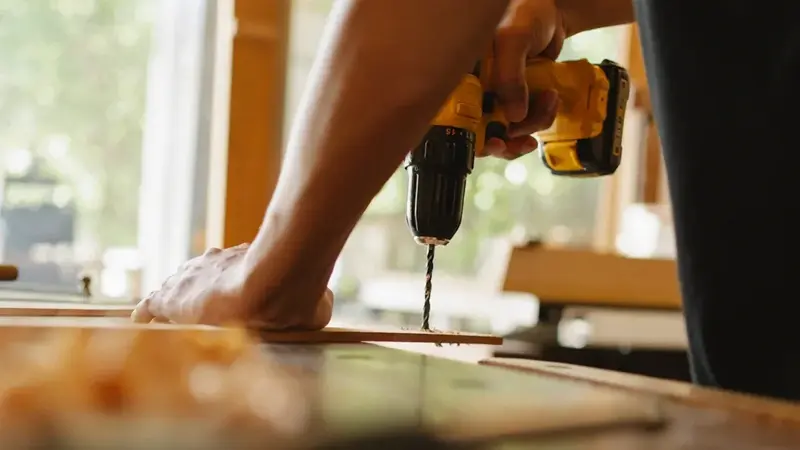Blog
Brushed Motor Explained: History, Working Principles, and Key Limitations
To truly understand brushed motor meaning, we must examine this foundational technology that revolutionized power transmission. The brushed motor has played a pivotal role in the evolution of electric machinery, answering the fundamental question “what is a brushed motor” through its simple yet effective design. Though modern technologies have introduced more efficient alternatives, these motors – defined by their carbon brush commutator system – remain widely used in numerous applications. This article provides a comprehensive breakdown of what is a brushed motor at its core, exploring the working principles that give meaning to brushed motor operation, along with their historical significance, advantages, and inherent limitations. Whether you’re a technician evaluating specifications, an engineer comparing motor types, or a curious DIYer researching power tools, grasping brushed motor meaning is fundamental to making informed
Brushed Motor Meaning: A Simple Definition
A brushed motor is a type of direct current (DC) electric motor that uses brushes and a commutator to deliver current to the motor windings. These components create the mechanical contact required for current transfer, enabling the rotor to spin and generate motion. When people refer to the term “brushed motor meaning,” they are typically describing this classical design where electrical energy is converted into mechanical energy via brush contact.
A Brief History of Brushed Motors
The invention of the brushed motor dates back to the early 19th century, pioneered by innovators such as Michael Faraday and Hippolyte Pixii. Thomas Davenport is credited with building the first practical brushed DC motor in 1834. Brushed motors quickly gained traction during the industrial revolution, becoming staples in transportation, manufacturing, and household appliances. Despite the rise of brushless technology, the historical significance of brushed motors remains undeniable.
How Brushed Motors Work
Brushed motors operate on the basic principle of electromagnetism.

Key Components and Electrical Flow
A standard brushed motor consists of the stator (stationary part), rotor or armature (rotating part), brushes, and commutator. When a DC voltage is applied, the current flows through the brushes to the commutator and into the armature windings, creating a magnetic field.
The Role of Brushes and Commutator
The brushes maintain electrical contact with the commutator segments, which are attached to the rotor. As the rotor spins, the commutator reverses the current direction in the windings, ensuring continuous rotation. This mechanism is simple yet effective, although it introduces friction and wear.
Advantages of Brushed Motors
Low-Cost Manufacturing
Brushed motors are inexpensive to produce, making them attractive for cost-sensitive applications like toys, household fans, and small tools.
Simple Control Circuits
They can operate directly from a DC power source without complex controllers, which is advantageous for beginners and simple devices.
High Starting Torque
Brushed motors deliver excellent torque at startup, making them suitable for applications requiring immediate force, such as electric drills or traction systems.
Limitations of Brushed Motors
Spark Generation and Wear
Because of the physical contact between brushes and the commutator, brushed motors generate electrical sparks during operation. These sparks contribute to brush degradation and can pose safety risks in explosive environments.
Higher Maintenance Requirements
The brushes wear down over time and need periodic replacement. Maintenance intervals vary depending on usage but are inevitable.
Heat and Energy Loss
Friction between brushes and commutator leads to significant heat generation and reduced energy efficiency, typically capping the motor’s efficiency at around 65%.
Brushed vs Brushless Motors: Key Differences
| Feature | Brushed Motor | Brushless Motor |
|---|---|---|
| Efficiency | ~65% | ~85% |
| Maintenance | High (brush replacement) | Low (no brushes) |
| Lifetime | Shorter | Longer |
| EMI / Sparks | High | Low |
| Cost | Lower | Higher |
Brushed motors are more economical upfront but demand more frequent maintenance and replacement. In contrast, brushless motors offer longer service life and higher efficiency, albeit at a higher cost. However, there are brushless motor tools that are very cost-effective, such as brushless drills (see specific specifications). Selecting between them depends on your priorities: budget, reliability, and application demands.
Frequently Asked Questions (FAQ)
Brushed motor meaning explained in simple terms?
It refers to a motor that uses brushes to transfer electrical current to the spinning part (rotor), allowing it to rotate and perform mechanical work.
Are brushed motors still used?
Yes. They are common in budget-friendly tools, toys, and automotive applications where advanced control or ultra-efficiency isn’t a priority.
Can a brushed motor be repaired?
Absolutely. The most common repair involves replacing the brushes, cleaning the commutator, or adjusting worn contacts.
Is a brushed motor AC or DC?
Most brushed motors are DC (direct current), although universal brushed motors can operate on both AC and DC in specific applications.
Conclusion
Understanding the brushed motor meaning involves more than just knowing its components—it’s about grasping its place in history, its practical applications, and its limitations in modern engineering. Despite newer alternatives like brushless motors, brushed motors still serve vital roles in many industries. By recognizing when and where to use them, professionals and hobbyists alike can make informed, effective, and efficient motor choices.









